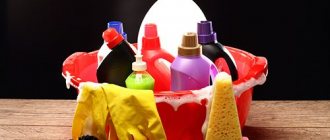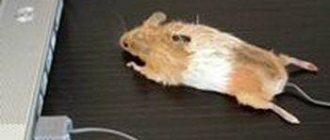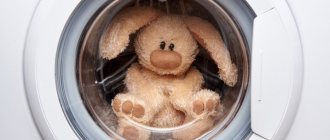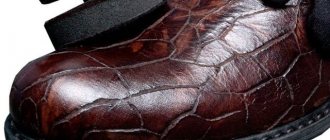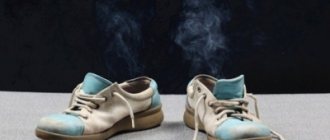04/21/201709/23/2020 Maria Ivanova 2 comments
White sneakers or sneakers are not only fashionable and stylish, but also very comfortable. The large assortment of sports shoes offered by sellers allows you to combine them with suits intended for training and with other clothing.
But very often a problem arises when the sole of the shoe becomes very dirty and turns yellow or gray. In this case, the question becomes relevant: how to quickly and efficiently clean the white sole of sneakers.
What types of pollution exist?
There are several types of contaminants to which the soles of our shoes are exposed.
- Pollution that does not require the intervention of aggressive substances is gray stains or plaque that appears after a walk. They can be removed with a wet cloth or liquid soap and a brush (use a toothbrush for convenience).
- Difficult to remove dirt (often with damage to the sole) - appears from mechanical impact on the shoes or it comes from the environment. This type includes the transformation of white to yellow, black scratches and, in principle, any change in color.
From the above, we can conclude that before buying this type of shoe, you should familiarize yourself with the cleaning methods presented below.
Reasons for color change
The color of the sole can change for a number of reasons. If the color has changed due to ingrained dust and dirt, then you can return the snow-white shade at home without much difficulty.
But sometimes it is impossible to restore a yellowed sole with cleaning agents - if the change is associated with structural changes in the polymer material. This happens if the polymer is constantly exposed to ultraviolet radiation. In this case, it will not be possible to remove the stains. The only way to restore the appearance of shoes is to use special shoe paint. Such products are available in shoe stores.
Cleaning with bleach powder
This method is suitable for the case when you notice changes on the surface of your sneakers after a walk. You can use either washing powder or bleaching powder.
Follow the following algorithm:
- Pour some powder into some container.
- Take a dishwashing sponge (clean), which is available in every home (or some people use an old toothbrush), dip it in the product and start applying it to the dirty areas.
- Leave for 5-10 minutes.
Rinse with cool water. It is important that the water is not very hot, otherwise you risk ruining your shoes.
Inventive owners who have the same problem have invented another method:
- Pour the powder into a container large enough to fit your sneaker (you can take a basin).
- Fill it with water until a paste forms.
- After 20-30 minutes, remove the pair by rubbing it with a brush.
- Rinse with water.
Recommendations
Expert advice will help you avoid many mistakes and carry out cleaning effectively:
- The most impressive shoes are those that combine a white sole with a contrasting upper. This point must be taken into account when using bleaching compounds, since carelessness during cleaning can ruin the appearance of your favorite pair.
- To gently clean the side of the white sole, it is convenient to use a toothbrush.
- Before you begin the bleaching process, you need to prepare a couple - wash off the dirt.
- It is recommended to carry out cleaning work with gloves to protect your hands.
Wearing your shoes carefully will help your sneakers and sneakers remain presentable longer.
The most complete and useful information about methods and means of removing yellow spots and yellowness from various surfaces and products is presented in this section.
Washing in a washing machine
This method will help you remove dust not only from the sole, but also from the surface.
To do this you need:
- Make sure your washing machine has the ability to wash sports shoes. If it is missing, look at the label at what temperature this pair of shoes is allowed to be washed.
- In addition to the powder, add a little bleach, or a special capsule for white.
- After washing, do not leave your shoes to dry in the open sun - this is dangerous, as the shoes may become damaged. It is better to choose a place that will be well ventilated. An excellent option would be to place a pair on the windowsill and fill it with newspapers, which will begin to absorb moisture and the sneakers will dry faster.
Contacting specialists: the price of the issue
Taking your shoes to the dry cleaner is the easiest, but also the most expensive way to clean up your favorite pair . Special dry cleaners that deal with shoe reconstruction, antibacterial treatment and cleaning can be found in large cities.
The cost of the service depends on the type of shoes, material, neglect of the situation and is determined by the company’s price list. On average, the price of comprehensive cleaning of sneakers, including the soles, in the capital will cost from 2,000 rubles.
In addition to direct cleaning, many dry cleaners offer other services that are paid additionally - firmware, replacement of laces, etc.
Whitening with toothpaste
Toothpaste is suitable not only for brushing your teeth, but also for cleaning your snow-white sneakers.
- Carefully treat the required area with the paste, bringing it to a foamy state.
- Wait 5-10 minutes.
- Rinse with water.
- Leave your shoes to dry.
Use of household chemicals
If gentle methods do not produce results, household chemicals - bleach and stain remover - . They work the same way.
- Water heated to 40° is poured into a basin, and then bleaching powder or liquid is added to it (2:1 ratio).
- The soles of sports shoes are immersed in the solution. Bleaching time ranges from half an hour to three hours, depending on the intensity of the contamination.
- When the desired effect is achieved, the sneakers are removed from the basin and their surface is washed with warm water.
When applying bleaching agents to shoes, you need to follow several rules:
- Do not touch the solution with bare hands.
- Use only products that do not contain chlorine. It will create a yellowish color that is resistant to any cleaning methods.
- Before the procedure, test the effect of the substance on a small area of the sole. Sometimes under the influence of aggressive chemicals it cracks.
- Keep shoes in the solution for no more than three hours. Otherwise, the structure of the material will deteriorate.
Whitening soda
Baking soda is also used not only for cooking, but also for cleaning. The mechanism is as follows:
- Dilute baking soda and water 1:1 until it becomes mushy.
- Apply the paste thoroughly to the sole for 10-15 minutes.
- Rinse with water.
- Shoes can be left to dry.
The method is quite popular due to its versatility. Baking soda can remove dirt (as it serves as a detergent) and whiten both the sole and surface of the sneakers. Most often, vinegar is added to the mixture, that is, the soda turns out to be slaked.
Drying rules
When drying shoes, you need to follow the rules, especially if the sneakers have been completely washed.
- Temperature conditions. Dry at room temperature. Do not leave sneakers on a radiator, near a heater or in the sun. The shoes may become deformed and a yellowish tint will appear that cannot be cleaned.
- We remove the water. Use laces to hang the boots upright to drain any remaining liquid.
- Keeping the shape. Fill the sneakers with crumpled paper - this will help maintain their shape and dry faster.
The choice of a specific product before washing the white soles of sneakers will depend on your cleaning experience. The more effort you put in, the better the result will be. Especially for old stains. And the best way to keep sneakers in perfect condition for a long time is mandatory care after each wear.
Nail polish remover (Acetone)
Often, willy-nilly, you notice black scratches on a pair of shoes. When conventional remedies such as baking soda do not help, gentle remedies come into play.
The acetone contained in nail polish remover can easily remove even grass stains.
But, do not forget that if the rubber is not of high quality, then acetone can damage it. Be sure to rinse the steam with water to stop the effects of the substance.
Cleaning shoes with white soles at home
What is the white sole made of?
The condition of shoes with white soles initially largely depends on the composition of the material of the sole itself. Modern soles are made from poly- and thermopolyurethane, polyvinyl chloride, tunit, felt, ethylene vinyl acetate, elatomer, leather, wood. Traditionally, white soles are an integral part of sneakers and sneakers. It is made from rubber with various additives that add wear resistance, reduce pressure on the foot, and improve thermoregulation. For example, elastopor rubber is porous, durable and lightweight at the same time. Carbon rubber has greater resistance and elasticity. It is these 2 types of rubber that are most often used to create the soles of sneakers and sports shoes.
In addition to useful properties, thanks to additives, rubber acquires a pattern and a different texture.
The composition of the material also determines how easier it will be to clean. The more porous the material, the deeper contaminants will be embedded in it and the more difficult it will be to completely remove them. Relief also plays a big role. A more textured sole, with “channels” and “holes” will collect more dust than a smooth one.
You can return the snow-white sole to its original appearance if you haven’t worn your sneakers without a break or cleaning for months. As with any cleaning, regularity is the key to success.
Cleaning the white soles of any shoe is almost the same. However, it is possible that the sole of your sneakers is made of rubber with some specific additives that do not tolerate certain products. If you still have the box or cleaning instructions, do not neglect them. In all other cases, first test the cleaner on the underside of the sole or on the inside of the shoe. If after one or two hours no cracks, stains or discoloration appear, the product can be used.
The easiest and most expensive way is to take shoes with white soles to the dry cleaner. There she is guaranteed to be put in order. However, this will not be cheap, and the results will not last long - literally until your next walk. Therefore, it makes sense to use home remedies to restore white shoe soles to their original whiteness.
Means and methods for removing yellowness
Shoes with a white sole and an upper in a contrasting color - black or dark blue - look most impressive. How to bleach the edging and sole without leaving stains on the upper of the shoe?
When bleaching soles, the dark top of the shoe must be covered
Use regular masking tape - just carefully stick it along the edge of the shoe. Of course, this must be done after cleaning the shoes from dust, otherwise the tape will not stick. Two or three layers will be enough to prevent drops or particles of the product you will use to bleach the sole from getting onto the dark top.
Preparing shoes with white soles for cleaning
Before using any product, shoes must be prepared - cleaned of dust. This can be done manually - with a brush or vacuum cleaner, or you can wash the shoes in the washing machine. This must be done carefully, following certain rules.
- Shoes must be disassembled into parts - remove the insoles, unlace them, and remove all removable parts. It is better to wash them separately, by hand.
- Place the shoes in a special laundry bag and place them in the washing machine drum.
- Turn on the “sportswear/shoes” mode. If this is not available, a “delicate wash” will do. The temperature for such shoes is no higher than 40 degrees. Shoes should be washed with a special detergent for washing sportswear or with a very mild detergent gel.
- If necessary, set the “Rinse” program additionally. The “spin” and “dry” modes cannot be used for sneakers and sneakers!
- Shoes should be dried naturally. You can also use special shoe dryers.
- Under no circumstances should you place wet or damp sneakers on a radiator. Firstly, sneakers or sneakers may become deformed from such forced heat. Secondly, overheating can cause the white sole to turn yellow forever.
Sports shoes can be washed in a washing machine on a delicate cycle using special detergents.
So, you have cleaned off the dust and dirt and white soles. Now arm yourself with the means at hand.
We erase the plaque. Eraser and melamine sponge
A regular school eraser can help you clean white soles. All you need is will and patience. And an eraser, of course. By the way, you need a light eraser, preferably white. The method is quite long and requires painstaking work.
Melamine sponge is a product that has truly magical properties.
- Wet the sponge.
- Just wipe off the dirt.
- When it gets dirty, rinse the sponge in water.
No detergent is required to remove dirt with a melamine sponge.
Cleaning sneakers with washing powder
They can not only wash things, but also bleach white soles.
- Dissolve the powder in warm water. The concentration of the powder should be 2 times greater than for washing.
- Immerse your shoes in the solution. It should only cover the sole!
- Leave for half an hour. Go over the sole with a stiff bristled brush.
- Thoroughly rinse off any remaining powder and foam.
This method is good for shoes whose quality you have no doubt about. The sole is attached to the sneakers mainly with glue and in inexpensive models it can simply “come off” after soaking.
How to clean yellowed soles with bleach
Before using the bleach method, you need to conduct a test - drop bleach onto the surface of the sole and leave. If everything is visually in order with the sole, you can use bleach.
- Wear rubber gloves.
- Dilute bleach in water. Concentration 1:2.
- Place shoes in the solution so that only the soles are covered. Check every 30 minutes, once the sole is whitened to the desired condition - rinse off the detergent and dry.
The method is unsafe, as with prolonged contact it makes the rubber looser.
Anti-yellow plaque toothpaste/tooth powder
The abrasiveness of toothpaste cleans the white soles of sneakers or sneakers well.
- Apply a small amount of paste or powder to an old toothbrush and scrub the soles thoroughly. Pay special attention to the irregularities (depressions, pimples) of the sole - this is where the most dirt accumulates.
- Rinse off the foam with water. If necessary, use a brush with stiffer bristles.
Toothpaste or tooth powder works well to remove stains from the white soles of shoes.
To clean white soles, use only white toothpaste or powder, without colored inclusions
Soda for whiteness
Again we rely on abrasive.
- Sprinkle some baking soda on a damp, soft cloth.
- Rub the edging and sole well. It is better to do this over the sink or with a rag on it - the soda will fall off when cleaning. Use an old toothbrush to clean the grooves on the sole.
- Rinse off any remaining baking soda with water and dry your shoes.
To whiten yellowed shoe soles, mix baking soda with lemon juice and rub the surface.
How to clean with acetone or nail polish remover
- Dampen a cotton pad or soft cloth with the liquid and rub the sole. Cleaning must be done carefully so that liquid does not get on the fabric upper of the shoe.
- Rinse with water and dry with a paper towel or napkin.
The rag for this method must be white; acetone-colored rags can fade and ruin your shoes.
The method perfectly removes contaminants such as black stripes on shoes or yellow spots, but it is more suitable for flat surfaces than for textured ones.
To whiten the soles, you can also use acids - citric and acetic.
Removing dirt with citric acid
- Wet the surface of the sole.
- Sprinkle some citric acid powder and rub with a cloth or sponge.
- Leave for 5-10 minutes.
- Shake off any remaining acid and rinse the surface with water.
Citric acid will also help whiten soles that have turned yellow over time (provided that the yellowness did not appear from drying on a radiator).
Bleach with vinegar
- Prepare a solution - dilute table vinegar in warm water in a ratio of 1:3.
- Dampen a rag with the solution and wipe away any dirt. Scrub stubborn stains with a brush.
- Rinse the surface.
Home remedies for removing plaque and stains from white soles: photo
The acid in table vinegar will help you clean and whiten the white soles of sneakers and sneakers. Citric acid will clean and whiten the soles of shoes.
Nail polish remover will quickly remove black streaks on shoes
Thanks to its abrasive and bleaching properties, baking soda effectively removes dirt from shoes.
We remove various stains from the surface of shoes - traces of marker, paint, shoe glue
Sometimes shoes need to be cleaned not only from street dirt, but also from various stains. In such cases, you need to solve 2 problems at once - get rid of the stain and not spoil the shoes.
Marker marks on shoes can be removed with alcohol, toothpaste and soda, and WD-40.
- Alcohol. It is better to remove traces of marker from shoes with alcohol (96%), although any alcohol with an alcohol content above 50% will do.
Alcohol will quickly remove marker stains on shoes
- Wet a cotton pad and wipe the marker stain.
- Repeat if necessary. Try not to get the stain too wet.
- WD-40. “Vedashka” can do a lot, including displaying a trace from a marker.
The magic “Vedashka” solves many everyday problems. Marker marks on shoes are no exception.
- Apply the product to the stain and wipe with a clean, dry cloth.
- The product should be used carefully.
- Toothpaste + soda. Mix toothpaste and baking soda in a 1:1 ratio. First saturate the stain with the mixture, and then rub the mixture into the stain using a damp cloth. The method requires strength and time.
Glue marks on shoes are not easy to remove. It is necessary to use agents that soak and separate the glue particles. To do this, use alcohol, vinegar, soda and special products.
- The easiest way to remove glue is to heat it up. To do this, use a hairdryer. Heat the spot until the glue softens. Then carefully scrape off the layer. Repeat until you have removed as much glue as possible. It is possible that at this stage the glue will be completely removed from your shoes.
Before removing the glue stain, heat it with a hairdryer.
If there is still glue left, use other means.
- Alcohol. It dissolves adhesive compounds, depriving them of stickiness.
- Soak the glue stain with alcohol.
- Rub gently. If the glue begins to soften, remove it. If not, wait and apply alcohol to the stain again.
- Scrape off any remaining glue and dry the shoes.
- A paste of baking soda and water will help remove the glue stain.
- Mix 1 teaspoon water and 1 tablespoon baking soda.
- Apply the mixture to the stain and leave for 5-10 minutes.
- Using a rag, rub the stain in a circular motion until the adhesive is completely removed.
- Rinse off the paste with warm water.
This method is suitable for any surface where drops of glue have fallen.
- The acid in table vinegar also softens the glue particles.
- Soak the glue stain in vinegar and leave for 15–20 minutes.
- If the glue has softened, try rolling the glue with a dry cloth or scraping it off.
- Special means for removing glue are called “Anti-glue”. They can be purchased at hardware stores. Simply apply this product to the stain and the glue will begin to dissolve.
"Anti-glue" or "glue in reverse" causes surfaces to come unstuck from each other.
- Paint marks on shoes will be removed with a solvent. Before using such products, test them on the soles or inside the shoes.
- Soak a cotton pad in acetone and wipe the stain.
- After the stain has disappeared, blot the area with a paper towel and dry.
The acetone method is suitable for oil paint. If you are not sure what kind of paint your shoes are stained with, then use the following recipe. It is suitable for removing any type of paint.
- Mix ammonia and water in a ratio of 1:3.
- Dampen a soft cloth and wipe the stain. Repeat until the stain comes off.
This method is suitable even for shoes made of thin suede.
Bleach
The most effective recipe for whitening is bleach. Please note that this method is quite dangerous. Firstly, you can ruin your shoes. Secondly, you can damage things nearby if splashes fly away. Moreover, it is necessary to carry out work with gloves.
Let's look at the sequence of actions:
- Prepare the place where the process will take place. Make sure there are no important household items nearby.
- Make a solution (it is very important that it is concentrated). You need to pour the solution into a basin. There should be enough solution so that it covers only the sole of the sneakers.
- You need to leave the steam for 30-40 minutes.
- Upon return, rinse them with running water and send them to dry.
Preventing yellowing
Maintaining the white color of shoe soles can be achieved using preventive measures.
These include:
- regular care;
- timely cleaning immediately after contamination occurs;
- use of shoe cosmetics.
The whiteness of the edging will be preserved better if you apply a little colorless cream to it and polish the surface.
Treatment with water-repellent impregnation will also give a good effect. It can be applied after periodic cleaning and even before putting a pair on the street for the first time, when the item is still completely new.
Lemon acid
Everyone knows that lemon acid can remove scale. What will she do with a pair of shoes then? The answer is quite simple. It can remove yellow stains from the surface. How to do it? Let's look at an example:
You washed your new sneakers and suddenly noticed that the soles have turned yellow. What to do in this case? Citric acid will save your sneakers!
- First, wet the sole of the sneaker.
- Secondly, the mechanism of action is exactly the same as in the case of powder and soda. You need to put citric acid on the brush.
- Rub the sole completely, not sparing the sizzling granules.
- When you are sure that all the granules have dissolved, rinse the steam with water.
- Let the sneakers dry. Remember that you can use paper or newspapers, which can draw moisture out from inside the sneaker.
There are several rules that will help you keep your sneakers or sneakers in as good condition as possible:
- You should not resort to wearing white sneakers in rainy weather.
- Always start cleaning shoes with gentle methods, gradually adding aggressive agents.
If you are not sure about the quality of the rubber sole, do not use products containing chlorine and alcohol.
Features of sneaker materials
Nowadays, shoes with white soles made of wear-resistant rubber or synthetic materials - filight, polyurethane, ethylene vinyl acetate, phylon have become very fashionable. They give sneakers and sneakers strength and elasticity. The materials for the soles are highly resistant to aggressive environmental influences. Despite this, during wear they become covered with various stains, become yellowish or acquire an unpleasant shade of gray.
Sometimes the sole has grooves around the perimeter, which complicates the situation with cleaning the shoes. To ensure that white sneakers last as long as possible, you need to regularly clean not only the upper, but also the sole. The material from which it is made is of great importance. A soft, damp cloth is ideal for cleaning the leather, while the rubber sole can be cleaned with a regular eraser or melamine sponge.
To prevent yellowish stains from appearing on the white sole, it is important to regularly wash off all contaminants.
Photo instructions on how to bleach soles
How to keep shoes white and protect them from dirt
To maintain the results of cleaning white soles for as long as possible, just follow some simple recommendations.
- Store sneakers and sneakers away from direct sunlight.
- After returning from a walk, wipe your shoes from dirt and dust with a damp soft cloth or sponge, let them dry, and then treat them with a special colorless cream, which will serve as a kind of protection for the soles.
- The soles should be cleaned at least as often as the uppers of the shoes. This will prevent cracking and the formation of hopeless stains.
- To prevent the formation of cracks, you can treat the sole with a special silicone gel, which has a water-repellent effect.
- Protective water-repellent impregnations should be applied regularly and only to clean and dry shoes.
- And, of course, you need to wear shoes carefully, avoiding dirt and puddles.
These simple tips will help keep your favorite shoes clean and looking good for a long time.
